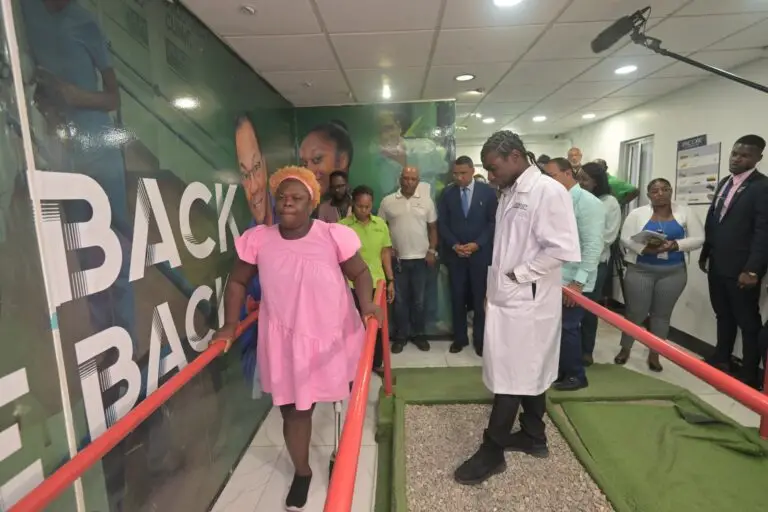KINGSTON, Jamaica — Last year’s campaign season left Dalvarine Bruce confronting a reality she never anticipated: life on one leg. Today, that reality has changed yet again—this time in her favour—thanks to Jamaica’s “New Limb, New Life” initiative.
Bruce’s injury occurred in February 2024 during a Jamaica Labour Party motorcade on nomination day, an incident that, along with the tragic death of 15-year-old Lamar Grey in a separate People’s National Party procession, sparked public demands for tighter safety protocols on the hustings.
Prime Minister Andrew Holness, acknowledging the personal cost behind the statistics, reflected on Bruce’s journey in a social-media update. “Losing a limb disrupts far more than mobility—it challenges self-worth and independence,” he noted. Holness stood beside Bruce at the Surgix Prosthetics Clinic as technicians calibrated her sleek silver limb, a moment captured in photos that reveal her trademark poise—even during taxing physiotherapy drills.
The prosthesis, supplied under the state-funded programme, represents more than hardware. It signals policy taking tangible form: restoring autonomy to citizens impacted by catastrophic injuries. For Bruce, it transforms daily logistics—stairs, commutes, errands—into achievable tasks once more.
The government hopes Bruce’s success story will underscore two imperatives: the necessity of comprehensive post-trauma support and the urgency of stricter crowd-control measures during political events. In Holness’s words, the initiative is “about putting freedom back where loss tried to take it away.”
As Bruce takes her first independent steps, policymakers now face their own forward stride—ensuring campaign trails remain routes to democracy, not danger.






